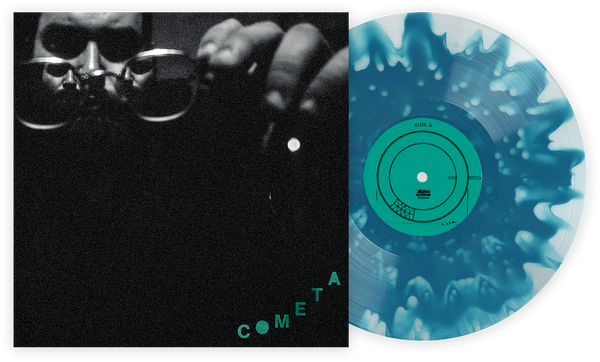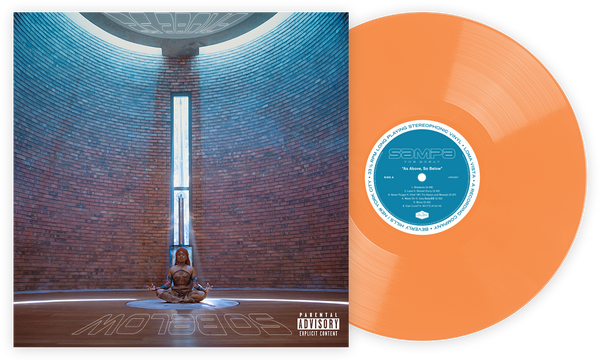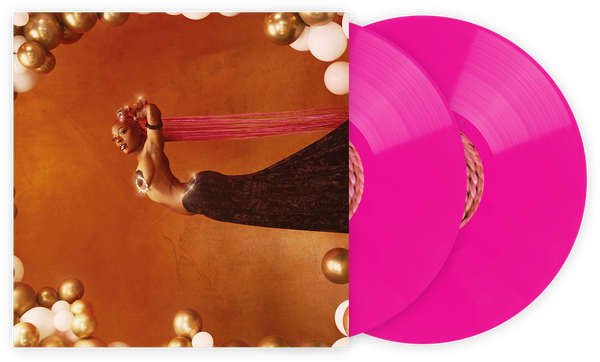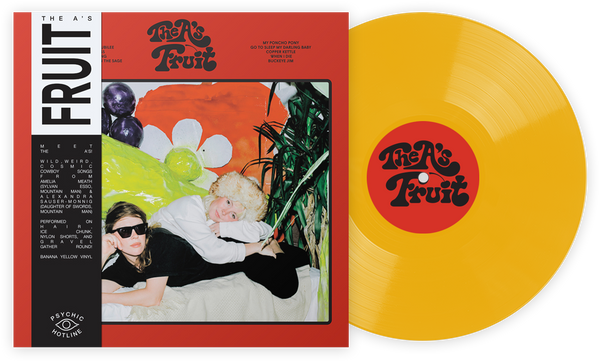Some music is designed to be unheard. “Background music,” you’ll call it. “Elevator music.” “Study music.” You know exactly what it sounds like, but you can’t name a single song. It’s the instrumental stuff you pop on in the background, hour-block loops off YouTube to help you study, or to just have something going while you do a mindless task. It’s the music you hear in a hotel lobby, kind of jazzy, somewhat upbeat, certainly not morose but, overall, bland and unmemorable. It’s not music; it’s Muzak.
When Major General George Owen Squier first invented telephone carrier multiplexing (a method of signal transmission, pre-radio airwaves) in 1910, it was originally used to transmit music to listeners via electricity, but when radio rolled around and took over the common home, the company he started for his project, Wired Radio Inc., moved toward commercial music licensing. Combining “Kodak” with “music,” he changed the name to Muzak in 1934, and in 1937, the company was bought out by Warner Bros. It was with this purchase that Muzak began thinking bigger: Muzak didn’t have to be only in shops and commercial, consumer establishments; it could be used in other private places, such as barbershops and dentists’ waiting rooms. Despite Muzak’s vast catalogue of tracks from the 1930s and 1940s, reaching these audiences required a new uptake, and Muzak made the switch to give it to them.
Eventually, Muzak moved toward music for productivity, debuting their new “stimulus progression” program, and began recording their own tunes, with a full orchestra at their disposal. The music was never meant to be really listened to. It was recorded and played in offices and call centers, programmed to be played in 15-minute segments, slowly increasing in speed and tempo to improve workers’ productivity. After one 15-minute block played, it would be followed by another 15 minutes of silence. And so on, and so on. This was done to prevent “listener fatigue,” and to ensure that the most productivity-inducing parts of the music still acted as a stimuli for employees. It hit its peak in the 40s and 50s. Former U.S. President Dwight Eisenhower had Muzak playing in the West Wing of the White House, and according to The Guardian, NASA used to play Muzak on space missions to relax astronauts.
Muzak and its music remained highly popular for quite some time, and it was only in the ’60s and ’70s that Muzak began to see a slow decline. There was a growing demand for “foreground” music and original creations — not just the classical covers that Muzak was known for. Other music programming companies offered different genres, from jazz to blues, and even Spanish language tunes (intended to be played in Mexican restaurants). The change hit Muzak hard, and the company was being pulled in multiple directions. Their “background music” remained popular in Japan, but North American audiences wanted something different. Muzak began offering custom curated playlists, each one designed to be different for each customer, but the ’80s and ’90s wanted something more out of sound. The company saw multiple owners and several shifts in strategy, affecting its sales and overall brand. After fighting it through as much as it could, Muzak filed for bankruptcy in February 2009, its sounds still immortalized on YouTube and the internet, and likely seared into the minds of some former entry and mid-level data and call center employees.
In 2011, Muzak was purchased by Mood Media, and in 2013, the name was retired. In 2017, Mood filed for bankruptcy, too, only to be saved by Apollo Global Management, and announced a partnership with music licensing platform Songtradr. A 2017 Los Angeles Times article suggests that Muzak is back, and the focus for the company (still known as Mood Media) is still the curated playlists, “as opposed to the generic instrumentals of Muzak past.” Mood Media is still focusing on the “stimulus progression” idea from back in the day, only now, they’re subtly encouraging shoppers to buy more. There still seems to be a pulse in the body of background music, a beating heart somewhere in the system. After all, someone needs to pull together those playlists you hear at McDonalds or while browsing through Target. Someone has to curate the hold music experience. Why not Mood, formerly Muzak, the experts in boring background music that leads nowhere, music that, when it cuts off jarringly for an in-store announcement or the final breakthrough to talk to a real person, you immediately forget what was even playing?
Music permeates every experience, and sometimes, it doesn’t spark any emotions; it just fills in the wait time and adds some texture to the background.
I don’t know a lot of people who live in silence. When I have to focus on a repetitive task, I put on trance music to keep me focused. In college, listening to instrumental music while I did my readings helped me remember them. After breakups, I put on sad music, or the emo rock I used to jam out to as a teen. When I just want easy listening to help me pay attention to a task at hand, I throw on coffee shop jazz or chill, relaxing beats for some distant, yet productive vibes.
According to Know Your Meme, a trusted meme information source, the earliest “chill beats” playlist was uploaded to YouTube on April 23, 2013, by the Chillhop Music channel. Before the livestream YouTube radio option now, the playlist gained over 2.8 million views.
Since then, the “lo-fi hip hop beats to chill/study to” phenomenon has been growing. I saw a girl on the streetcar rocking a shirt that bore the phrase, and I, ecstatic to see a meme in real life, told her unironically that I loved it. The memes have been relentless, and the search for “lo-fi beats to chill to” on YouTube generates thousands of responses, most of them livestream miniature 24-hour radio stations where listeners can tune in at any time and get non-stop chill beats playing, all of the titles suggesting activities one can do while listening, largely revolving around chilling, studying and relaxing. They seem to be largely targeted toward high school and college students, with titles suggesting doing homework while you listen, and some geared more toward work than others.
The tracks featured on these playlists and mixes are jazzy, soulful and largely instrumental. With the lack of lyrics to pay attention to, the music curated for these playlists is conducive to concentrated thinking — no words to distract you, and the occasional vocal sample lends itself more to use as an instrument than a lyrical statement.
The livestream with the highest concentration of listeners, stationed on ChilledCow’s channel, boasts an average of 16,000 listeners at any given time. That’s just the “beats to study/relax to” one. Their other livestream, “beats to sleep/chill to” has almost 4,000 listeners going no matter what. One of their two-hour mixes from 2018 has been listened to over 16 million times. Another two-hour mix on Chillhop, uploaded in 2016, has over 27 million plays. Clearly, people are listening and responding. “This one is for those of you who need to focus on work, study or just enjoy real mellow vibes,” the description explains. Comments on the mix suggest that people really are using lo-fi beats to study to: “[F]inal exam people we are in this together,” YaBOIFulcsi laments as recently as three months ago. “[T]he homework is temporary, the success is forever! [N]ow get to work and stop scrolling! [Y]ou got this!” Abbie Schmidt says. Even an educator, C W, gets involved: “I play this low in my classroom every day, it calms my students. They enjoy it and I do as well!”
Is there a correlation between the two types of music? Is “lo-fi beats” the new Muzak? According to Bulgarian psychiatrist Georgi Lozanov, who, in the 1960s, was obsessed with finding out the correlation between music and memory, there is a genre of music that helps us retain more information. Of course, it’s classical music, but then it has to be specific types and you have to listen to them at certain times in the studying process. It makes sense, then, why Muzak actually worked — the slower songs would start in the morning, and then pick up in speed as the day went on. Lo-fi beats playlists don’t seem to be organized in the same way; the tracks all seem to sound fairly similar in speed and rhythm, and presumably, one can’t organize them in a certain way, as there’s really no way of knowing who is listening to the playlist, when and for what reason.
The interesting thing about these lo-fi mixes and playlists is that they seem to operate the way that Muzak did, but in a less extreme way. Instead of 15-minute breaks to avoid listener fatigue, the curators of these playlists and mixes don’t bother blending everything in for a continuous listening experience in which you can’t tell which track ends when. Instead, each song has a definite beginning and an end, and each fades out into a second or two of silence before the next one starts, giving some variation in the tunes, offering listeners a possible natural break between readings.
With Muzak seemingly gone and elevator music an empty genre (interestly enough, Muzak never actually made music for elevators — but their jazzy, classical style became synonymous with the type of music you would hear in one, especially in ritzy, high-end buildings and hotels), it seems there was a gap that needed to be filled. Muzak’s downfall was the cry for more aggressive music, music that required active listening and participation, and the generic instrumental tracks it offered simply couldn’t compete. Mood Media now curates hundreds of playlists with already-existing easy listening music, and lo-fi beats YouTube channels operate in a similar way. With the world slowly burning around us, why wouldn’t we want to step back and not have to pay attention for once? Lo-fi beats give us the opportunity to do whatever we want. Work, chill, relax, sleep, study — it’s up to you. It just provides the soundtrack.
Sofie Mikhaylova is a well-rounded music nerd based in Toronto, Canada with a soft spot for found sounds and analogue electronics. You can follow her on Twitter.
Join the Club!
Join Now, Starting at $36Pages

Exclusive 15% Off for Teachers, Students, Military members, Healthcare professionals & First Responders - Get Verified!












